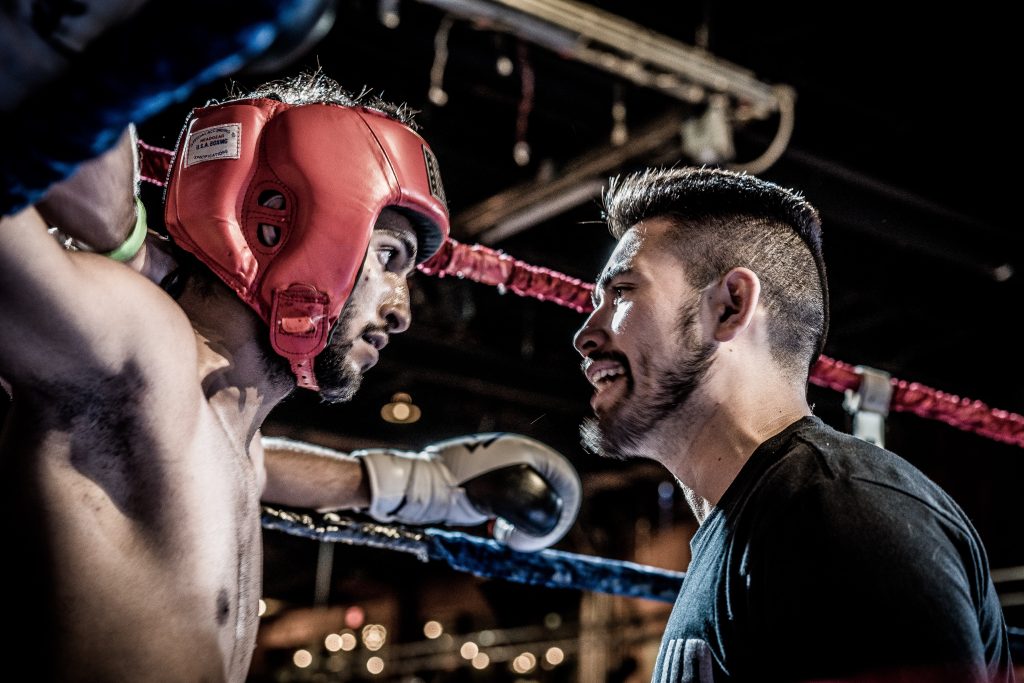What is a Catchweight Boxing or MMA Fight ?
Imagine a showdown between two fighters, each with unique skills and a fierce determination to emerge victorious. Now, picture that these fighters are battling against each other but also against the constraints of conventional weight classes. This intriguing scenario is at the heart of catchweight boxing and MMA fights – contests that push the boundaries of weight divisions, adding a layer of complexity and excitement to the world of combat sports.

Understanding Catchweight Fights
Catchweight fights defy the norm of strict weight divisions that govern the majority of professional boxing and mixed martial arts (MMA) matches. In a catchweight fight, fighters agree to compete at a weight that is between the established weight classes. While standard weight classes offer a level playing field by grouping fighters of similar sizes, catchweight fights venture into uncharted territory, giving rise to unique challenges and opportunities.
Historical Context
The concept of catchweight fights has deep roots in combat sports history. In the early days of bare-knuckle boxing, competitors often faced significant weight disparities, resulting in matches that were as much about strategy as they were about brute strength. This historical precedent laid the groundwork for modern catchweight bouts, which emerged as a deliberate deviation from the norm.
One of the most iconic catchweight fights occurred in 1976 when boxing legend Muhammad Ali faced Japanese wrestler Antonio Inoki. While not a traditional boxing match, this crossover spectacle showcased the curiosity and intrigue that catchweight matchups can generate.
Challenges in Making Weight
The importance of gaining weight cannot be overstated in combat sports. Weight classes exist to ensure fairness and reduce the risk of severe injuries due to mismatched opponents. Fighters undergo rigorous training and dietary regimens to meet the requirements of their designated weight classes. However, these efforts sometimes lead to extreme weight-cutting practices that can harm a fighter’s health and performance.
Flexibility vs. Fairness
The debate surrounding catchweight fights revolves around the balance between flexibility and fairness. Proponents argue that catchweight matchups enable the best fighters to face each other regardless of weight, potentially creating legendary encounters. On the other hand, opponents raise concerns about one fighter’s potential advantages due to competing closer to their natural weight.
To catchweight or not to catchweight? The question continues to fuel discussions among fans, fighters, and promoters.
Prominent Catchweight Fights
Catchweight fights have produced some of the most memorable moments in combat sports history. One notable example is the showdown between Manny Pacquiao and Oscar De La Hoya. In 2008, Pacquiao, a smaller fighter moving up in weight, defeated the larger De La Hoya, solidifying his status as a boxing sensation.
Impact on Rankings and Titles

Catchweight fights can significantly influence rankings and title opportunities. When a catchweight fight involves a reigning champion, the outcome can reshape the divisional landscape. However, such fights are subject to controversy. Critics argue that championship belts should be contested within the confines of established weight classes to maintain the integrity of the sport.
Regulatory Bodies and Catchweight
Regulatory bodies play a crucial role in approving catchweight fights. These bodies ensure that catchweight limits are reasonable and that the safety of the fighters is not compromised. Guidelines for catchweight matchups vary; some organizations are more lenient than others.
Fighter Perspectives
Entering a catchweight fight requires mental and physical preparation beyond the norm. Fighters share stories of their unique challenges, from adjusting training routines to adapting fight strategies. Competing at a catchweight can bring uncertainty and motivation as fighters aim to prove their prowess under non-standard conditions.
Analyzing the Fan Base
How do fans react to catchweight fights? The answer varies. Some fans relish the unpredictability and spectacle of catchweight matchups, while others prefer fights within the confines of established weight divisions. The potential to attract a wider audience adds another layer to the discussion, as catchweight bouts can generate curiosity among casual viewers.
Evolution of Weight Management
Advancements in weight management techniques have transformed the dynamics of catchweight fights. Scientific approaches to cutting weight have replaced dangerous practices, offering fighters safer ways to gain and perform optimally. This evolution aligns with the spirit of catchweight matchups, which seek to maximize the potential of every fighter involved.
The Entertainment Factor
Catchweight fights to inject an extra dose of entertainment into combat sports. Much like exhibition matches, these bouts provide a unique opportunity for fighters to test their skills without the constraints of traditional weight limits. This unpredictability adds a surprise that resonates with die-hard fans and casual spectators.
Trainers and Catchweight Strategies
Trainers play a pivotal role in preparing fighters for catchweight contests. Crafting strategies that leverage a fighter’s strengths while accounting for the opponent’s unique attributes requires a thoughtful approach. Trainers also guide fighters through the mental aspects of competing at a catchweight, fostering confidence and focus.
Crossover Catchweight Fights
Catchweight matchups extend beyond the realm of boxing and MMA. Fighters from different disciplines facing off at non-standard weights capture the imagination of fans from both worlds. These crossover battles create a buzz that transcends individual sports, contributing to the growth and popularity of combat sports overall.Looking Ahead
The future of catchweight fights is intriguing. Catchweight matchups could become more commonplace as combat sports evolve, blurring the lines between weight divisions. Regulatory bodies might refine their guidelines, finding a delicate balance between flexibility and maintaining the integrity of the sport. As fans, we can only anticipate the epic clashes that catchweight fights might bring.
FAQs
Q1: Are catchweight fights more common in boxing or MMA? A1: Catchweight fights are found in boxing and MMA, with notable examples in both disciplines.
Q2: Do catchweight fights impact a fighter’s legacy? A2: Catchweight victories over esteemed opponents can significantly enhance a fighter’s legacy.

Q3: Can fighters request catchweight bouts? A3: Yes, fighters, promoters, and organizations can negotiate catchweight fights based on various factors.
Q4: Are catchweight fights riskier for fighters? A4: Catchweight fights can present unique challenges but are less safe than fights within standard weight classes.
Q5: Are catchweight fights considered for championship titles? A5: Yes, catchweight fights can involve championship titles, but they often come with controversy and debate.





